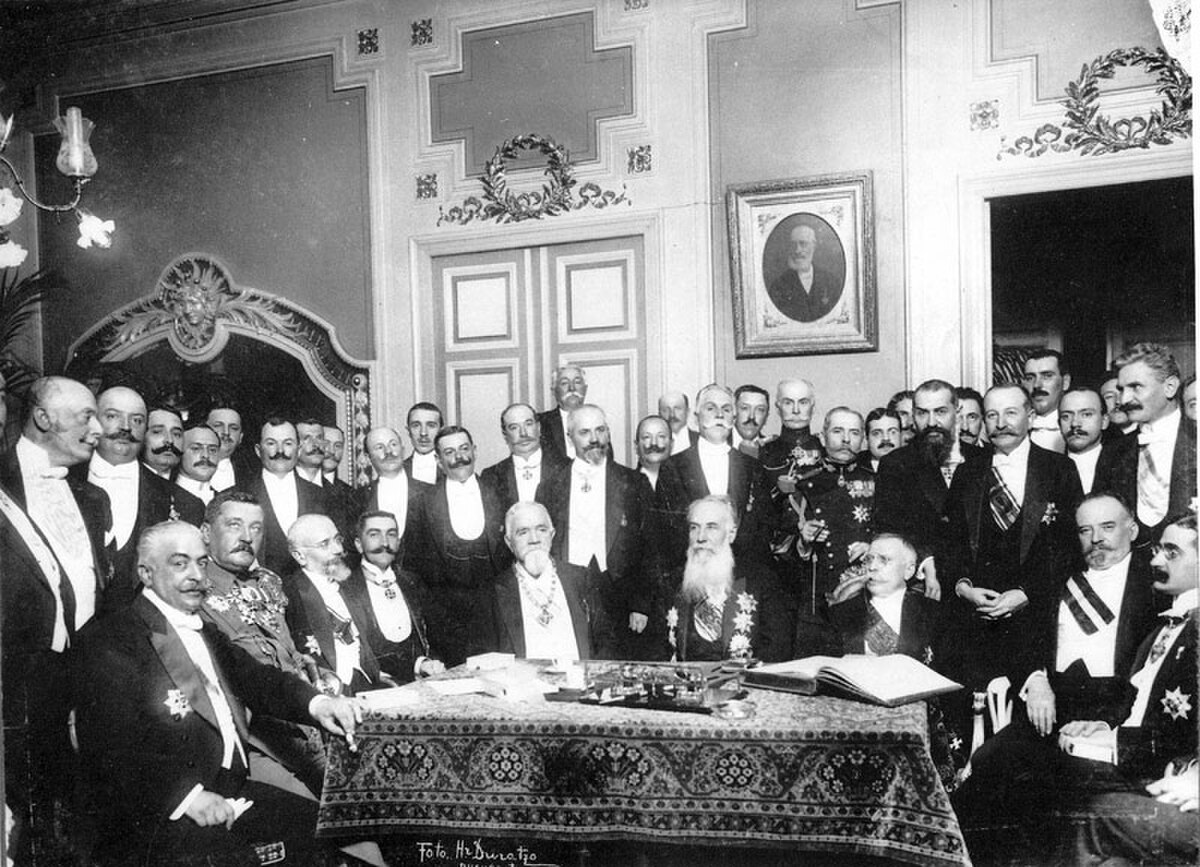
Treaty of Bucharest
Bucharest, RomaniaArmistice
With the Romanian army closing in on Sofia, Bulgaria asked Russia to arbitrate. On 13 July, Prime Minister Stoyan Danev resigned in the face of Russian inactivity. On 17 July the tsar appointed Vasil Radoslavov to head a pro-German and Russophobic government.[74] On 20 July, via Saint Petersburg, the Serbian Prime Minister Nikola Pašić invited a Bulgarian delegation to treat with the allies directly at Niš in Serbia. The Serbs and Greeks, both now on the offensive, were in no rush to conclude a peace. On 22 July, Tsar Ferdinand sent a message to King Carol via the Italian ambassador in Bucharest. The Romanian armies halted before Sofia.[74] Romania proposed that talks be moved to Bucharest, and the delegations took a train from Niš to Bucharest on 24 July.[74]
When the delegations met in Bucharest on 30 July, the Serbs were led by Pašić, the Montenegrins by Vukotić, the Greeks by Venizelos, the Romanians by Titu Maiorescu and the Bulgarians by Finance Minister Dimitur Tonchev. They agreed to a five-day armistice to come into effect on 31 July.[90] Romania refused to allow the Ottomans to participate, forcing Bulgaria to negotiate with them separately.[90]
Treaty of Bucharest
Bulgaria had agreed to cede Southern Dobruja to Romania as early as 19 July. At the peace talks in Bucharest, the Romanians, having obtained their primary objective, were a voice for moderation.[90] The Bulgarians hoped to keep the Vardar river as the boundary between their share of Macedonia and Serbia's. The latter preferred to keep all of Macedonia as far as the Struma. Austro-Hungarian and Russian pressure forced Serbia to be satisfied with most of northern Macedonia, conceding only the town of Štip to the Bulgarians, in Pašić's words, "in honour of General Fichev", who had brought Bulgarian arms to the door of Constantinople in the first war.[90] Ivan Fichev was chief of the Bulgarian general staff and a member of the delegation in Bucharest at the time. Although Austria-Hungary and Russia supported Bulgaria, the influential alliance of Germany—whose Kaiser Wilhelm II was brother-in-law to the Greek king—and France secured Kavala for Greece.
The last day of negotiations was 8 August. On 10 August Bulgaria, Greece, Montenegro, Romania and Serbia signed the Treaty of Bucharest and divided Macedonia in three: Vardar Macedonia went to Serbia; the smallest part, Pirin Macedonia, to Bulgaria; and the coastal and largest part, Aegean Macedonia, to Greece.[90] Bulgaria thus enlarged its territory by 16 percent compared to what it was before the First Balkan War, and increased its population from 4.3 to 4.7 million people. Romania enlarged her territory by 5 percent and Montenegro by 62 percent.[91] Greece increased her population from 2.7 to 4.4 million and her territory by 68 percent. Serbia almost doubled her territory enlarging her population from 2.9 to 4.5 million.[92]
